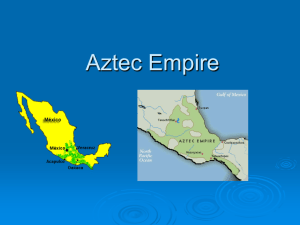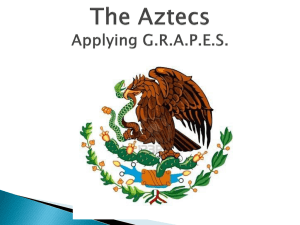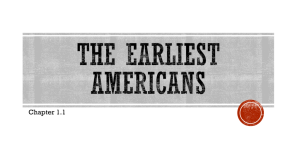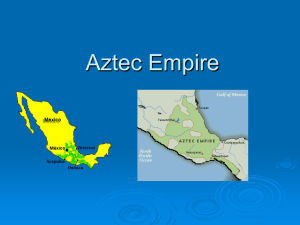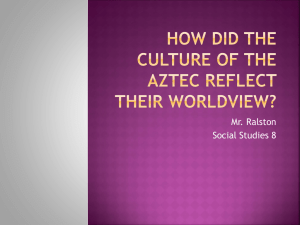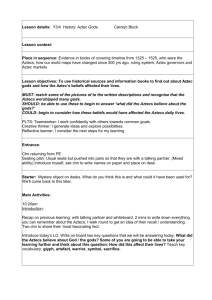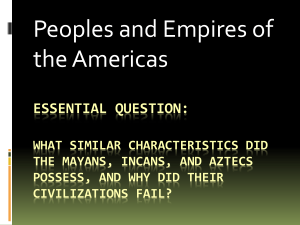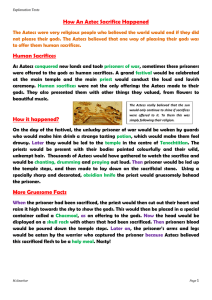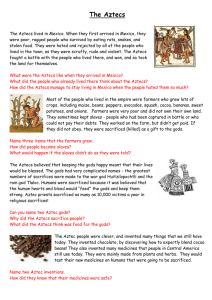File
advertisement
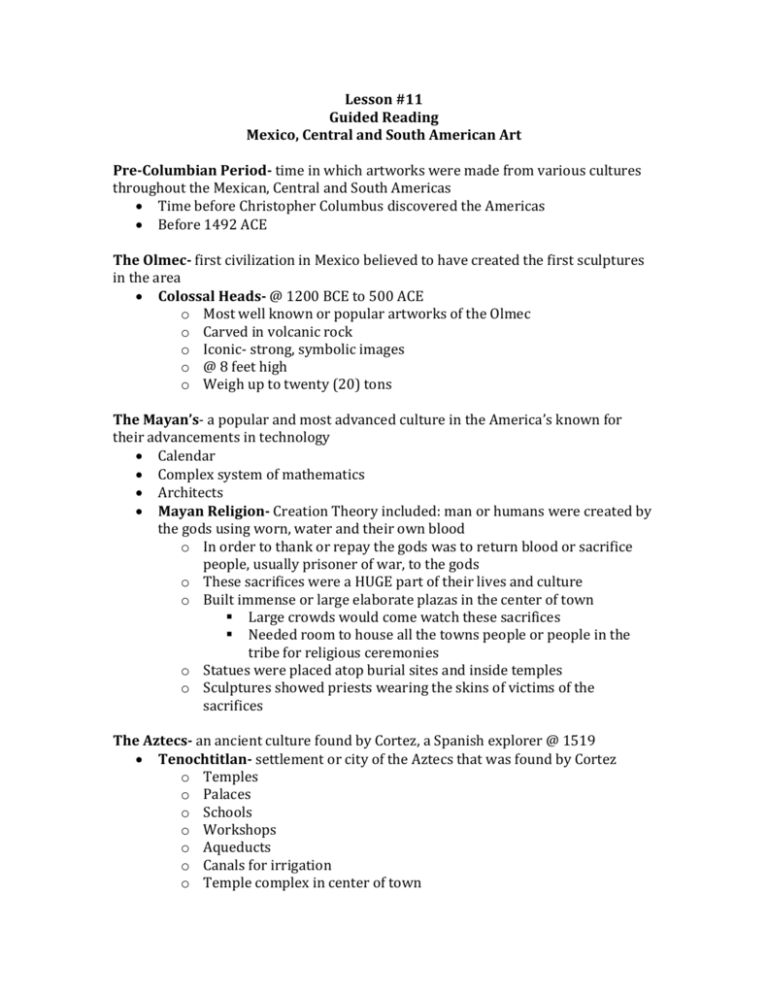
Lesson #11 Guided Reading Mexico, Central and South American Art Pre-Columbian Period- time in which artworks were made from various cultures throughout the Mexican, Central and South Americas Time before Christopher Columbus discovered the Americas Before 1492 ACE The Olmec- first civilization in Mexico believed to have created the first sculptures in the area Colossal Heads- @ 1200 BCE to 500 ACE o Most well known or popular artworks of the Olmec o Carved in volcanic rock o Iconic- strong, symbolic images o @ 8 feet high o Weigh up to twenty (20) tons The Mayan’s- a popular and most advanced culture in the America’s known for their advancements in technology Calendar Complex system of mathematics Architects Mayan Religion- Creation Theory included: man or humans were created by the gods using worn, water and their own blood o In order to thank or repay the gods was to return blood or sacrifice people, usually prisoner of war, to the gods o These sacrifices were a HUGE part of their lives and culture o Built immense or large elaborate plazas in the center of town Large crowds would come watch these sacrifices Needed room to house all the towns people or people in the tribe for religious ceremonies o Statues were placed atop burial sites and inside temples o Sculptures showed priests wearing the skins of victims of the sacrifices The Aztecs- an ancient culture found by Cortez, a Spanish explorer @ 1519 Tenochtitlan- settlement or city of the Aztecs that was found by Cortez o Temples o Palaces o Schools o Workshops o Aqueducts o Canals for irrigation o Temple complex in center of town Aztec Sculpture- important aspect of Aztec rituals o Statues were placed atop two temples sitting on huge pyramid shapes o Sculptures showed priests wearing the skins of victims of the sacrifices o People who were sacrificed were buried within the temple walls o Sculpture was used when the Aztecs practiced their religion during ceremonies o Eagle- symbol of the sun and who the Aztecs made sacrifices for Aztec Books- used a system of picture writing, similar to hieroglyphics o Written on deer skin or paper o Attached all papers together to form a book with different codices or codex (Think tabs, chapters or different subjects all in one book) o Used for predicting events of the future o Highly illustrated (lots of images) o Quetzalcoatl- important character in the Aztec book One of the gods of the Aztecs “Feathered Serpent” These images are of pages in the Aztec books. You can see the immense detail of their culture, the calendar and what they believed to happen in the future The Inca Culture No written language Used a system of tying knots in a string or rope to keep track of money or the transfer of goods Some people believe the system of tying knots was their language Incan Architecture Did not use mortar (the material that goes in between bricks or stones) Instead, they used a system of raising and lowering stones so they broke or eroded and fit perfectly into each other Machu Piccu- found @ 16th century by Francisco Pizarro in 1532 o Created by Emperor Pachacuti and built @ 1450 o Assumed to be built by the Incas to protect themselves from attacks from different tribes in the east o Located between the peak of two (2) mountains at an elevation of 8,000 feet above sea level o Not discovered by the Spanish, therefore was not destroyed o
